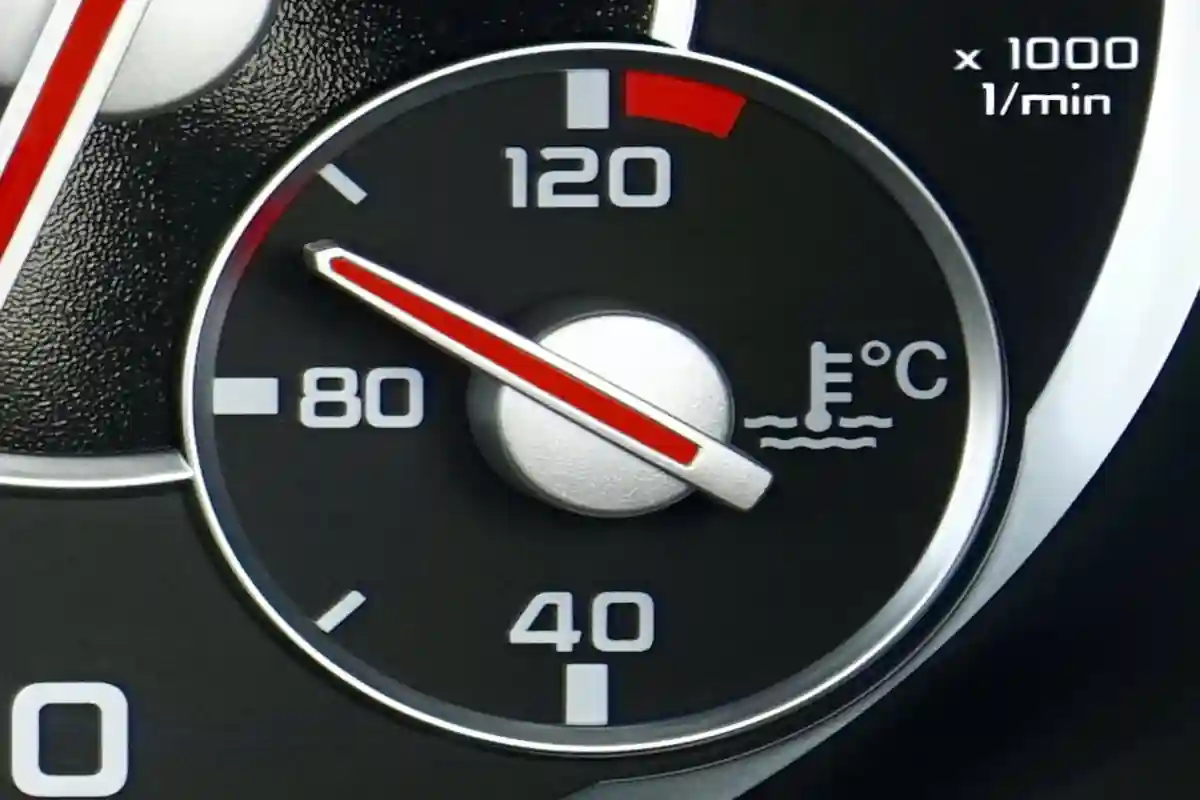The car’s temperature gauge is one of the instruments that are very useful to different drivers because it measures the temperature of the coolant inside the engine.
As such, it’s always important to keep your eye on the temperature gauge because of how an overheated engine can be very dangerous.
What causes a car’s temperature gauge to suddenly rise and reach hotter levels?
If the temperature gauge is rising, that could mean several things such as the car’s coolant running low, the fan or the radiator have problems, a failed thermostat, or a variety of engine problems. However, even something as simple as a broken temperature gauge can be the reason why this is happening.

When it comes to your car, you should already know that it is never a good idea to allow the engine to become too hot because this can cause issues that can lead to more problems.
In relation to that, the temperature gauge is there to help you monitor the temperature of your engine so that you will be able to know whether or not your engine is still running at normal temperatures.
Why is the temperature gauge on my car going up?
For those who are still trying to adjust to the life of regular driving, one of the gauges that you should be monitoring regularly is the temperature gauge.
The reason is that the temperature gauge is the instrument that monitors how hot the engine is becoming. Of course, if you understand what this means, you should know that you should never allow your engine to become too hot because of how this can lead to engine problems that can be very expensive to fix.
In relation to that, one of the things you may have noticed while you are driving is that your temperature gauge is going up. This basically means that the temperature of your car is rising as the gauge is there to measure and reflect how hot the engine is.
So, why is it that the temperature gauge on your car is going up?
To understand that, it is important to look at how the temperature gauge works. This instrument measures the temperature of your engine by measuring the temperature of the coolant.
The coolant is basically the cooling solution that your car uses to help keep the engine and its different compartments cool.
What the coolant basically does is that it circulates throughout the entire engine and absorbs the heat that is produced by the engine.
So, by measuring the temperature of the coolant, the temperature gauge is basically measuring the heat that’s absorbed by the coolant. Of course, that heat is produced by the engine.
Now, what you also need to understand is that it is normal for any engine to produce heat. That’s because the way the engine works is through the process of combustion as it uses a spark to combust the air and fuel mixture in the engine. As such, through the process of combustion, heat is produced by the engine.
Of course, what you also need to know here is that the different parts of the engine constantly move the entire time. As such, friction is produced by the process of constant motion that these engine parts and components go through on a regular basis. It is also needless to say that friction produces heat.
The more the engine works, the more heat it produces. As such, when you are accelerating and when you are driving at high speeds, this forces the engine to work more and burn more fuel in the process.
Because of that, it will end up producing more heat as a result of the extra work it does and the extra fuel it burns off. That’s why cars that are running at higher speeds tend to have temperature gauges that are on the higher side as well.
As such, because the engine is supposed to produce heat regularly as it functions and does what it is supposed to do, it is natural for the coolant to absorb the heat produced by the engine and then reflect that heat onto the temperature gauge.
This is why the temperature gauge naturally rises.
So, because the temperature of the coolant inside the engine normally rises, that means that it is perfectly normal for your temperature gauge to go up and rise as well.
This shouldn’t be something you should be worried about as long as the temperature is still within the normal range. The problem here is when the temperature becomes too hot to the point that it is already beyond the normal range on your temperature gauge.
What causes a car’s temperature gauge to rise too much?
As mentioned, a car’s temperature gauge should rise normally because your engine actually needs to work harder and produce more heat as you are driving. But the problem arises when the temperature gauge has risen up too much to the point that the temperature reading has reached levels that are no longer normal. So, what causes a car’s temperature gauge to rise too much?
1. Low coolant
As stated previously, the coolant is what’s responsible for absorbing the heat that’s produced by your engine.
So, when your car is low on coolant, the coolant that’s circulating throughout the engine will be low as well.
This means that whatever coolant is left would have to absorb more heat and would thereby allow the temperature gauge to have a higher reading.
2. Faulty fan
The purpose of the fan here is that it draws air through the radiator when the car is idle or is only moving slowly.
There are times when the fan can end up breaking because of how it is merely driven by a belt and pulley system.
That means that some of the parts and components of that system may end up coming too loose and will cause the fan to become faulty. There might also be instances where the fan might stop spinning due to this.
3. Radiator Problems
The radiator in your car needs to be working properly so that the engine won’t end up overheating.
It must be free of any obstructions and must not have any debris that has built up inside the radiator because this can hamper the flow of the coolant.
Even something as simple as dead insects can cause this to happen. Of course, when the radiator is blocked, airflow tends to be limited as well.
4. Thermostat issues
The purpose of the thermostat is to control the flow of water throughout the engine so that the engine stays cool.
So, if the thermostat has issues or ends up failing especially when the car is on the older side, the engine might end up becoming too hot.
5. Engine problems
There are times when the cooling system is not the problem as the problem is actually the engine itself.
As such, due to a blown head gasket, an engine may run hotter because this can exhaust the gasses into the coolant and cause heat to build up more.
6. Faulty temperature gauge
Finally, there are times when the temperature gauge rises so much because it is already faulty.
That means that your engine and its cooling system are actually fine but your temperature gauge is actually faulty.
This can be caused by the normal wear and tear that common car components experience on a regular basis.
How do I fix my car temperature?
So, when you do notice that your temperature gauge is at higher levels, that means that your engine is dangerously close to overheating. As such, how do you fix the issues that are related to your car’s temperature?
1. Fill your car’s coolant
In a lot of cases, the only reason why the engine is running too hot is that your car is low on coolant. As such, the simple way to remedy the solution is to fill up your car’s coolant. You will see that it has worked if the temperature gauge drops back to normal.
2. Clean the radiator
Something as simple as cleaning the radiator can solve your problem because the radiator needs to be free and unobstructed. So, when there are debris and dead insects obstructing the radiator, clean them out to see if the problem has been resolved. Use a small brush to remove any debris on the radiator.
3. Have a mechanic check the cooling system and the engine
If the coolant did not solve the issue, then the logical solution to your problem is to have a mechanic check your car for any problems in the cooling system or even in the engine.
This isn’t something that you can do on your own because you are not equipped with the tools and the skills to fix your car’s temperature problems especially when the problems are now related to the cooling system or even the engine itself.
So, if the problem is only related to one of the components in the cooling system such as the fan or the radiator, this shouldn’t cost you a lot of money for repairs or replacements.
However, if the engine is now the issue, then that is when you might end up shelling out more money as this can potentially cost you thousands of dollars.
Sources
It still runs: What Causes a Car’s Temperature Gauge to Increase?
Sundevil Auto: What is a Temperature Gauge?
Your Mechanic: 3 Essential Things to Know About Your Car’s Temperature Gauge



